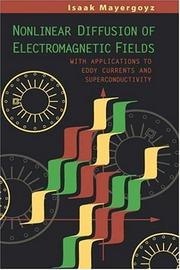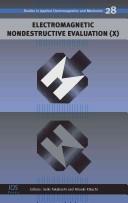| Listing 1 - 10 of 23 | << page >> |
Sort by
|
Book
ISBN: 1504404858 Year: 1969 Publisher: [Place of publication not identified] : IEEE,
Abstract | Keywords | Export | Availability | Bookmark
 Loading...
Loading...Choose an application
- Reference Manager
- EndNote
- RefWorks (Direct export to RefWorks)
Over the years, the isolated-phase bus has received widespread application in connecting the output of generators to step-up transformers. The trend toward generating units of larger capacity has dictated the need for higher rated isolated-phase bus designs. The increased losses associated with the higher capacity bus may be significant in the economic evaluation of alternate schemes or selection of equipment. The bus designer must know the magnitude and distribution of losses in order to keep temperature rises of bus components within the limits specified in USA Standard C37.20. In addition, the losses must be known to permit proper sizing of forced-cooling equipment whenever it is used.Various papers have been presented that deal with the determination of losses in isolated-phase bus enclosures. The difference in the results obtained for the same bus using various methods is of sufficient magnitude to cause concern. The industry has indicated the need for a guide for calculating losses to establish a common yardstick for establishing, evaluating, and applying different designs.
Book
ISBN: 1504481704 Year: 2022 Publisher: New York : IEEE,
Abstract | Keywords | Export | Availability | Bookmark
 Loading...
Loading...Choose an application
- Reference Manager
- EndNote
- RefWorks (Direct export to RefWorks)
Practices and requirements for semiconductor power rectifier transformers for dedicated loads rated single-phase 100 kW and above and three-phase 100 kW and above are included. Static precipitators, high-voltage converters for dc power transmission, and other nonlinear loads are excluded. Service conditions, both usual and unusual, are specified, or other standards are referenced as appropriate. Routine tests are specified, and an informative annex provides several examples of load loss calculations for transformers when subjected to nonsinusoidal currents, based on calculations provided in the standard.
Book
Abstract | Keywords | Export | Availability | Bookmark
 Loading...
Loading...Choose an application
- Reference Manager
- EndNote
- RefWorks (Direct export to RefWorks)
Book
ISBN: 0444424202 Year: 1985 Publisher: Amsterdam : Elsevier,
Abstract | Keywords | Export | Availability | Bookmark
 Loading...
Loading...Choose an application
- Reference Manager
- EndNote
- RefWorks (Direct export to RefWorks)
Book
ISBN: 1119866723 1119866707 Year: 2024 Publisher: Hoboken, New Jersey : John Wiley & Sons, Inc.,
Abstract | Keywords | Export | Availability | Bookmark
 Loading...
Loading...Choose an application
- Reference Manager
- EndNote
- RefWorks (Direct export to RefWorks)
Book
Year: 1994 Publisher: [Washington, DC] : [National Aeronautics and Space Administration],
Abstract | Keywords | Export | Availability | Bookmark
 Loading...
Loading...Choose an application
- Reference Manager
- EndNote
- RefWorks (Direct export to RefWorks)
Book
ISBN: 1523121106 1785612166 Year: 2019 Publisher: London : The Institution of Engineering and Technology,
Abstract | Keywords | Export | Availability | Bookmark
 Loading...
Loading...Choose an application
- Reference Manager
- EndNote
- RefWorks (Direct export to RefWorks)
The book, consisting of 6 chapters, studies motion-induced eddy current techniques for non-destructive testing and evaluation by considering: forward simulation methods; sensors for MIECT; experiments and LET measurements; Lorentz force evaluation and non-destructive applications.

ISBN: 0124808700 9786611049768 128104976X 0080537693 9780124808706 9780080537696 Year: 1998 Publisher: San Diego Academic Press
Abstract | Keywords | Export | Availability | Bookmark
 Loading...
Loading...Choose an application
- Reference Manager
- EndNote
- RefWorks (Direct export to RefWorks)
Eddy currents (Electric). --- Electromagnetic fields. --- Superconductivity.

ISBN: 6611029761 1281029769 9786611029760 1607502518 600000415X 1435608593 9781435608597 9781607502517 9781433709845 1433709848 9781586037529 1586037528 9781281029768 Year: 2007 Publisher: Amsterdam Washington, DC IOS Press
Abstract | Keywords | Export | Availability | Bookmark
 Loading...
Loading...Choose an application
- Reference Manager
- EndNote
- RefWorks (Direct export to RefWorks)
Since the first Electromagnetic Nondestructive Evaluation (ENDE) workshop was held in London 1995, the workshops have contributed to the technical advance in ECT through competition and collaboration. This title focuses on 'Eddy Current Testing' (ECT) to identify cracks in metals and alloys.
Nondestructive testing --- Magnetic testing --- Eddy currents (Electric)
Book
Year: 2004 Publisher: Washington, D.C. : U.S. Nuclear Regulatory Commission, Office of Nuclear Reactor Regulation,
Abstract | Keywords | Export | Availability | Bookmark
 Loading...
Loading...Choose an application
- Reference Manager
- EndNote
- RefWorks (Direct export to RefWorks)
Nuclear pressure vessels --- Eddy currents (Electric) --- Analysis.
| Listing 1 - 10 of 23 | << page >> |
Sort by
|

 Search
Search Feedback
Feedback About UniCat
About UniCat  Help
Help News
News